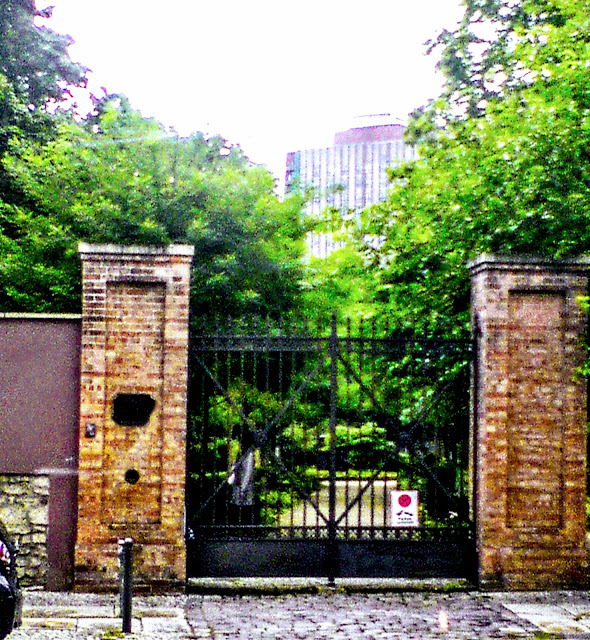Berlin's unknown areas - Feuerland (Fireland) and its surroundings
Feuerland (Fireland) is an area almost quite unknown even by us Berliner’s ! This "hot" area around Chauseestraße in Mitte got it’s name in the middle of the 19th century. But why is it called so?
Many companies that produced engines and metalwork settled here.These factories used a lot of fire for production, large amounts of smoke from the chimneys rose into the sky, August Borsig, Louis Schwartzkopff, Friedrich Adolf Pflug and Johann Friedrich Ludwig Wöhlert had their factories here. None of these are left. The factories closed or moved away. Only street names, such as Schwartzkopffstrasse, remind of the former factory owners.
Dorotheenstädtischer Cemetery
You should visit the Dorotheenstädtischer Cemetery if you are interested in Berlin's history, politics, science and culture. The cemetery was created around 1763 outside the Oranienburger Tor, which lay not in Berlin. At that time, it was feared that the neighborhood of the graves could cause diseases, so the dead had to be buried outside the city walls. Many people, who have influenced Berlin’s social, political and cultural life are buried in the Dorotheenstädtischer Cemetery. Well-known German writers, who found their last rest here, are: Bertolt Brecht, his wife Helene Weigel, Heinrich Mann and Anna Seghers.The architects Friedrich Schinkel (1781-1841) master of Prussian architecture and Heinrich Strack, who designed the Siegessäule, were buried at the cemetery. The statue on the grave of the famous Berlin sculptor Gottfried Schadow is impressive. Two other artists, Christian Daniel Rauch and Friedrich August Stüler, lie side by side. A cross and a stone square remind of Dietrich Bonhoeffer and other resistance fighters who were murdered by the Nazis. Nearby is the house where Bertholt Brecht lived until his death in 1956. It is now a memorial place.
Website

entrance to Dorotheenstädtischer Cemetery
The French cemetery
The French Cemetery is the neighbor of the DorotheenstättischerCemetery. It was created in 1780 for the Berlin Huguenots. The most important monument in the French cemetery is the tomb for Friedrich Ancillon, who was responsible for the education of Friedrich Wilhelm IV. Friedrich Wilhelm IV was king of Prussia from 1840-1861. Here is also the grave of Madame du Titre (1748-1827). Because of her humor - and because of her dialect - she went into the history as a Berlin original.
Museum of Natural History
Its origins date back to 1810. The present building was not opened until 1889. Here you can learn everything about the development of life and nature. A Brachiosaurus Brancai and other extinct dinosaurs, greet the visitor in the Central Lighthouse. Of course, there are many stuffed animals and the history of evolution in this popular museum. But astronomy is also not lacking: You will find models of the planets. Some great composers such as Mozart were inspired to them. The result can be heard in the museum. In the East Wing, is the museum's “wet collection”. Fish, spiders, crabs, and other animals that are conserved in alcohol and stored in glasses, are waiting for the visitors to marvel at them.
Website
How to get there: U6 (Schwartzkopffstrasse)



